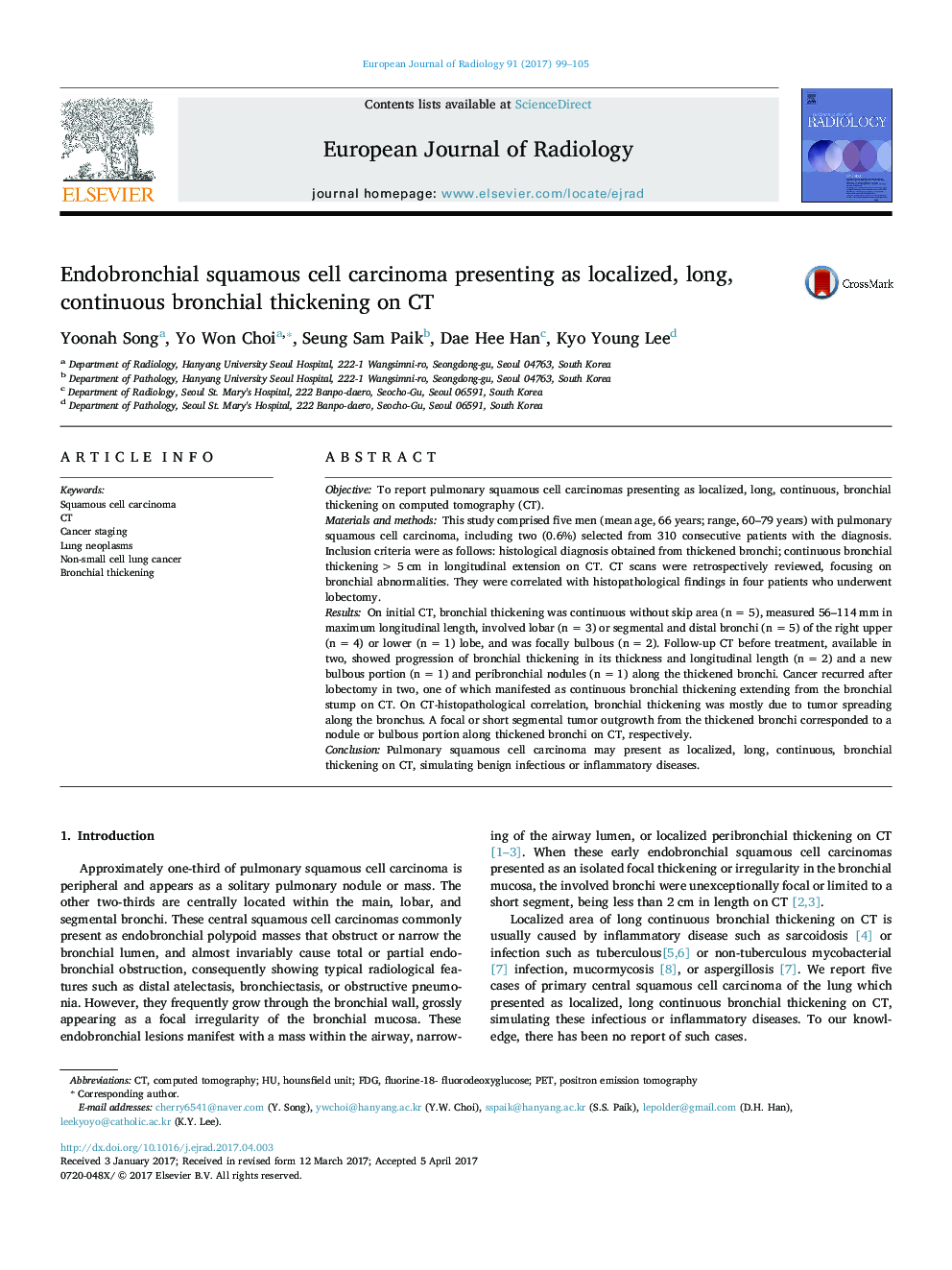| Article ID | Journal | Published Year | Pages | File Type |
|---|---|---|---|---|
| 5726293 | European Journal of Radiology | 2017 | 7 Pages |
ObjectiveTo report pulmonary squamous cell carcinomas presenting as localized, long, continuous, bronchial thickening on computed tomography (CT).Materials and methodsThis study comprised five men (mean age, 66 years; range, 60-79 years) with pulmonary squamous cell carcinoma, including two (0.6%) selected from 310 consecutive patients with the diagnosis. Inclusion criteria were as follows: histological diagnosis obtained from thickened bronchi; continuous bronchial thickening > 5 cm in longitudinal extension on CT. CT scans were retrospectively reviewed, focusing on bronchial abnormalities. They were correlated with histopathological findings in four patients who underwent lobectomy.ResultsOn initial CT, bronchial thickening was continuous without skip area (n = 5), measured 56-114 mm in maximum longitudinal length, involved lobar (n = 3) or segmental and distal bronchi (n = 5) of the right upper (n = 4) or lower (n = 1) lobe, and was focally bulbous (n = 2). Follow-up CT before treatment, available in two, showed progression of bronchial thickening in its thickness and longitudinal length (n = 2) and a new bulbous portion (n = 1) and peribronchial nodules (n = 1) along the thickened bronchi. Cancer recurred after lobectomy in two, one of which manifested as continuous bronchial thickening extending from the bronchial stump on CT. On CT-histopathological correlation, bronchial thickening was mostly due to tumor spreading along the bronchus. A focal or short segmental tumor outgrowth from the thickened bronchi corresponded to a nodule or bulbous portion along thickened bronchi on CT, respectively.ConclusionPulmonary squamous cell carcinoma may present as localized, long, continuous, bronchial thickening on CT, simulating benign infectious or inflammatory diseases.
